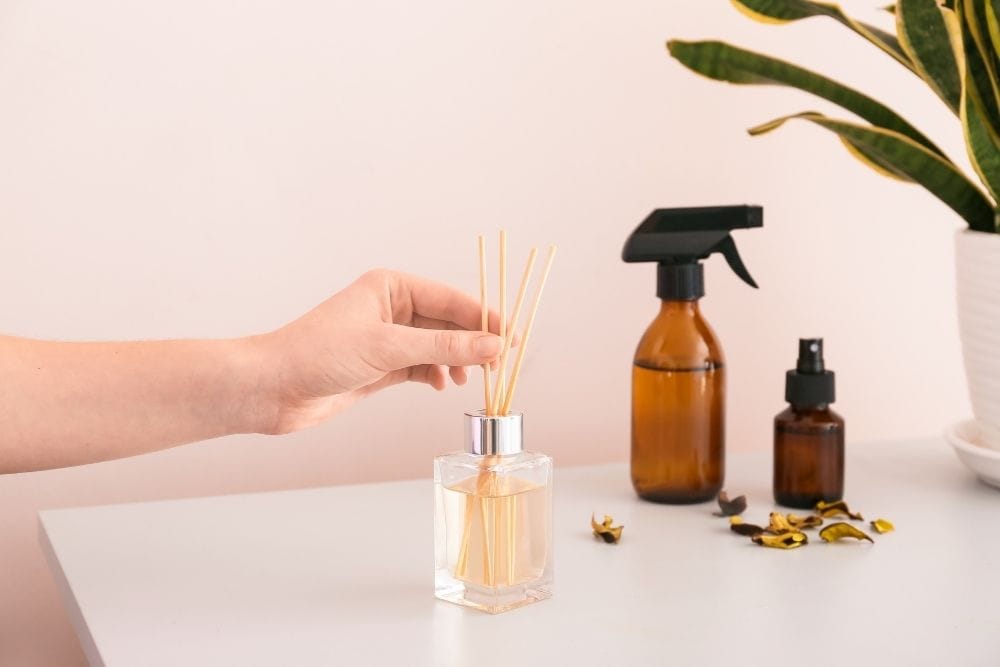Aromatherapy is incredible. It smells fantastic, it can make you feel calm, happy, sleep, or energetic, and it comes in a plethora of forms! There are countless ways to enjoy the benefits of healing or cleansing scents, and room sprays and reed diffusers are two of them.
Contents
What is Room Spray?
Room sprays, or home fragrances, are essential perfumes for your house. They can be incredibly natural, or quite artificial, depending on where you buy them. Some sprays rely heavily on essential oils and others use more fabricated fragrances.
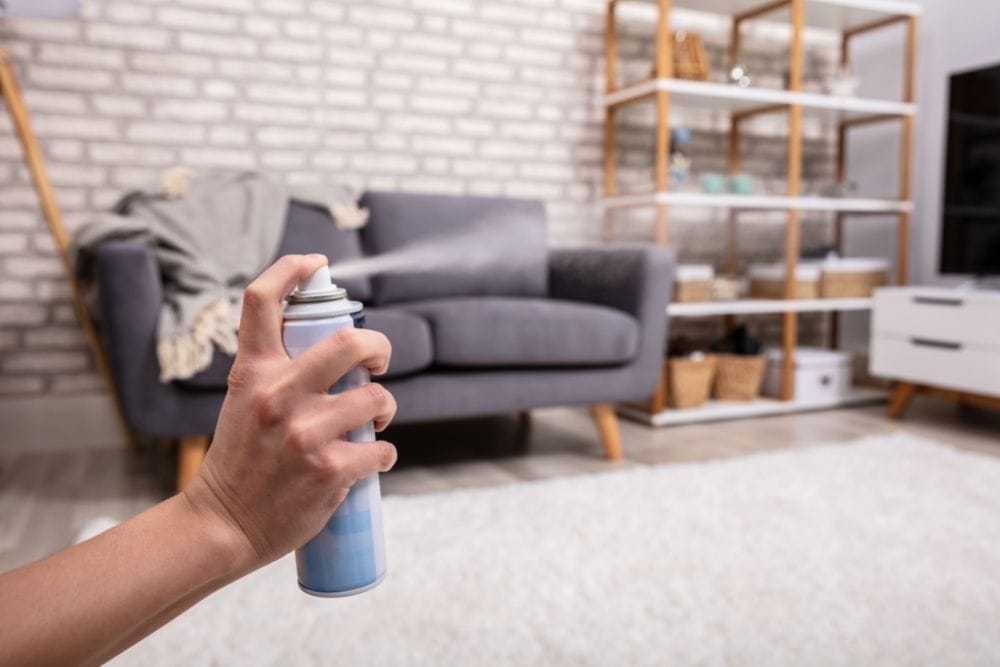
Part of what makes room sprays so great is how many options there are. There are even room sprays for sheets and pillows.
We love to use room sprays to freshen up a space, and we like that you can control what rooms and pieces of furniture get spritzed. Of course, the mist will spread a little bit, but it’s not like a diffuser that lets the air carry the mist around the space.
What are Reed Diffusers?
Reed diffusers are immediately recognizable for the slim diffuser sticks that stick out of them. They are chic, easily accessible, and add a subtle scent to any space.
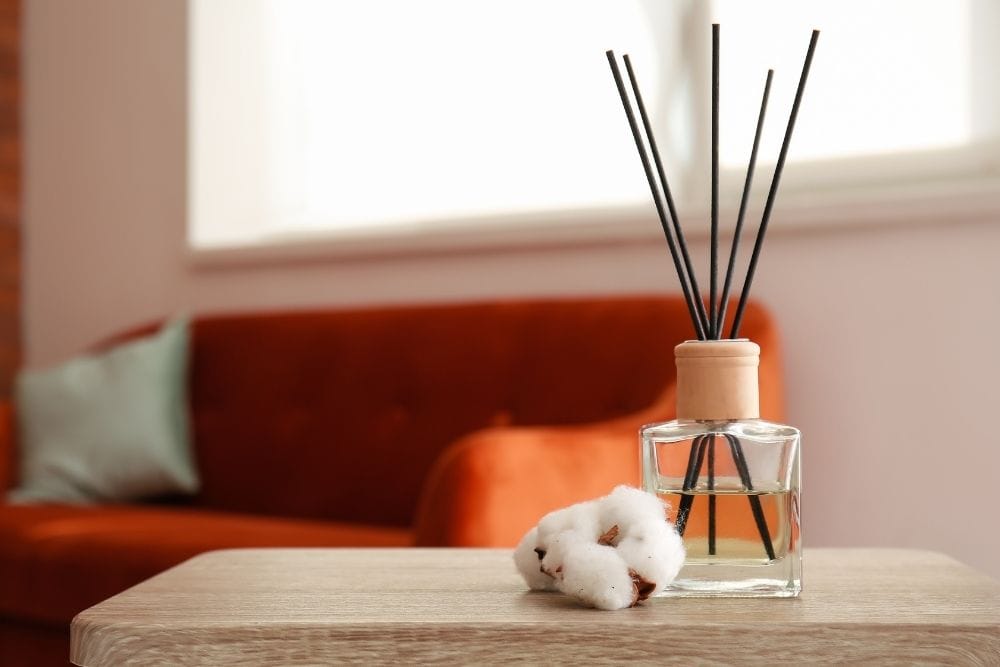
Lots of people enjoy keeping a reed diffuser in the bathroom, but they work well anywhere. We love keeping a reed diffuser filled with a soothingly scented liquid in the bedroom to keep the space smelling as calm as we want to feel!
You can buy reed diffuser liquid online, and there are a lot of sophisticated brands out there making their own version of a reed diffuser, but they are also very simple to DIY.
The scented liquid works its way up the reeds then slowly disperses around the space. Unlike a room spray, reed diffuser scents are gentle.
Can I Pour Room Spray In a Reed Diffuser?
Yes! If you have room spray you aren’t using, you can 100 percent pour it into a reed diffuser bottle, pop some reeds in, and stick it in the corner of a room to let it work its magic. After all, both liquids are fragrances designed to be distributed around a space.
We love the idea of using a room spray in a reed diffuser because sprays are typically as viscous as reed diffuser liquid, so they will climb up the reeds well. If an aromatherapy liquid is too thick, it will just sit at the bottom of the diffuser bottle.
Add Alcohol

One thing we would encourage you to check before dumping room spray into the diffuser bottle is if the room spray has alcohol in it. All reed diffuser liquid should contain at least a spoonful or two or high-proof alcohol like Isopropyl-Alcohol or vodka.
This ingredient has two important functions. To start, it acts as a preservative and keeps the reeds from molding, and the essential oils from spoiling. This is particularly important if you’re using water for your reed diffuser base, especially if it’s unfiltered or tap water.
Secondly, alcohol helps the scent move up the reeds. It makes sure that the scent stays at the top of the reed, and that it always smells fresh. You should also flip the reeds once or twice a week to preserve the reeds’ freshness.
Make Your Own Room Spray
If you haven’t already been converted into a room-spray enthusiast, you will be once you realize how easy it is to make your own room spray at home. The best part is you can incorporate your favorite essential oils into the spray for a customized aromatherapy experience.
The room spray is water-based, but you actually add the most important ingredient last. First, start with your favorite essential oil, or essential oil blend. You need 10 to 15 drops in total, so you can either use a single oil or have fun creating your own concoction.
Now you need an emulsifier. An emulsifier bonds the oil to the water so that you aren’t just spritzing water from the room spray bottle while the essential oil droplets hang out untouched at the top of the container.

High-proof alcohol, salt, witch hazel, and even aloe vera juice all work. You can technically also use vinegar, but we don’t think that would smell very nice, even in small amounts.
Mix the essential oil drops with your emulsifier of choice. Go for a teaspoon of salt, and a tablespoon of the liquid options. Our favorite option is high-proof alcohol.
Now you can add your water to the mix. This will be enough for a small bottle (around 60-milliliters), so feel free to double or triple the recipe if needed.
Turning It Into Reed Diffuser Liquid
Now you’ve made your super simple room spray, let’s turn it into a reed diffuser liquid. DIY room sprays can be bulked up to fit the requirements of a room diffuser liquid in almost no time at all.
If you bought your room spray from a store or online, all you would have to do is grab a funnel and tip it into your small-mouthed bottle. The homemade version is almost just as simple.
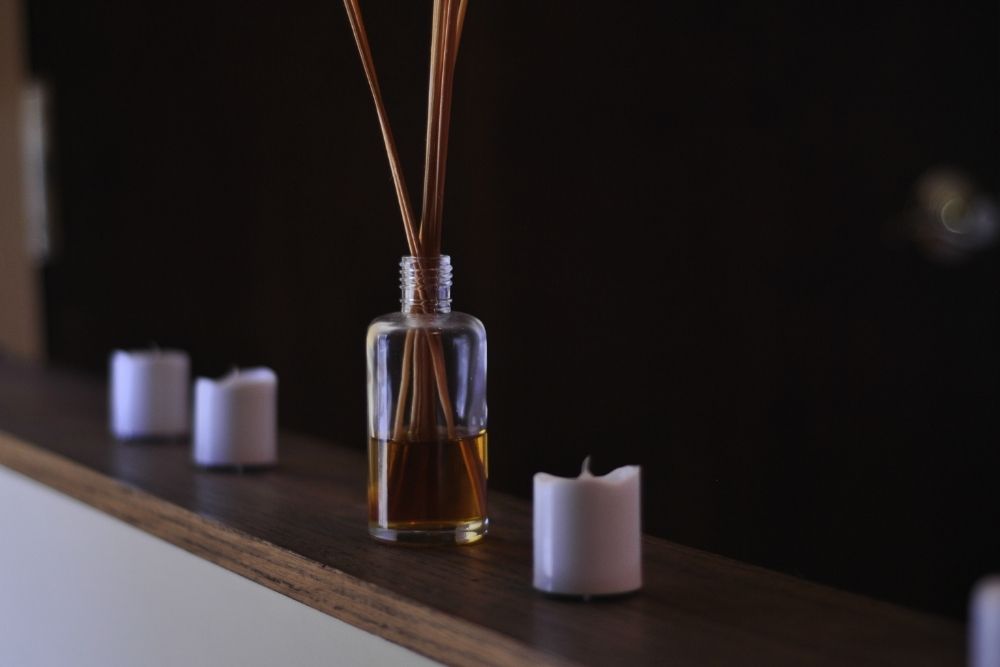
Like we mentioned previously, using alcohol in a reed diffuser is imperative. While you could get away without it, the liquid won’t last as long or smell as fresh.
Therefore, you should add one to two tablespoons of high-proof alcohol to your room spray when transferring it to a reed diffuser. This will ensure you don’t waste any of those wonderfully concentrated essential oil droplets by not letting them move up the reeds properly.
While that maximum amount of essential oil drops for a room spray is 15, most recipes recommend 20 to 30 drops of oil for a reed diffuser. This is because most diffuser bottles hold more than a small spray bottle, and reed diffuser liquid can afford to be a little more potent.
You can add the same type of oil you use in the room spray, or get creative by incorporating other oils for a makeshift blend.
More water can also be added.
Essential Oil Blend Ideas
Single oils are fantastic, especially if you’ve invested in high-quality ones, but blending oils can produce incredibly interesting scents that can redefine a space. Here are a few essential oil blend ideas for your next room spray or reed diffuser.
Just remember that room sprays should have around 15 drops of oil in them, and reed diffusers can handle around 30 drops of oil, so adjust the recipe accordingly. We have put the measurements in ‘parts’ to make this easier for you.
Sunny Citrus
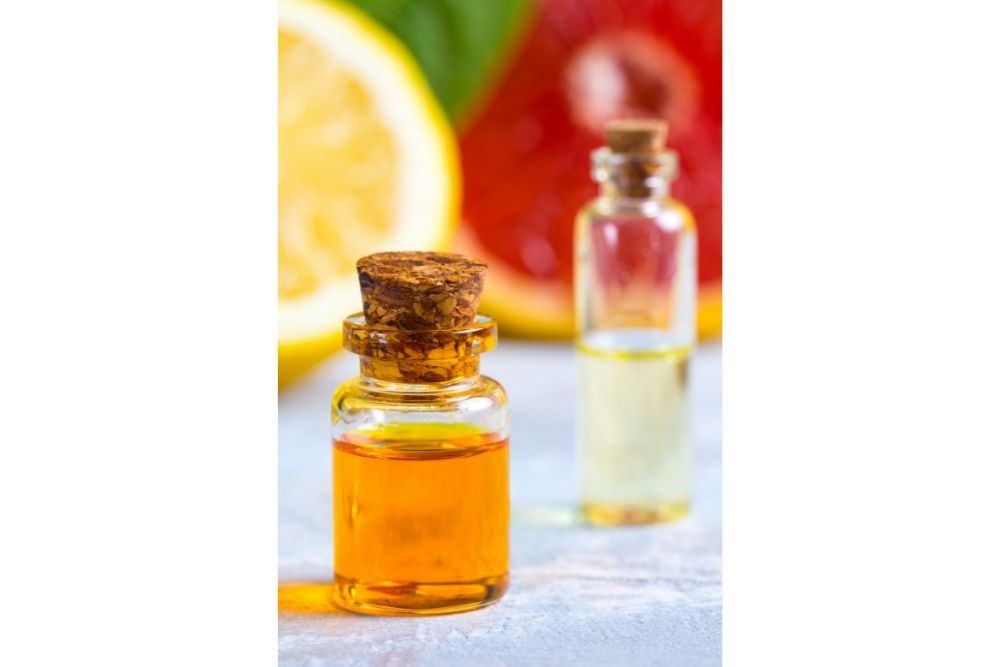
1 part Orange Essential Oil
1 part Tangerine Essential Oil
½ part Lime Essential Oil
Warm Winter
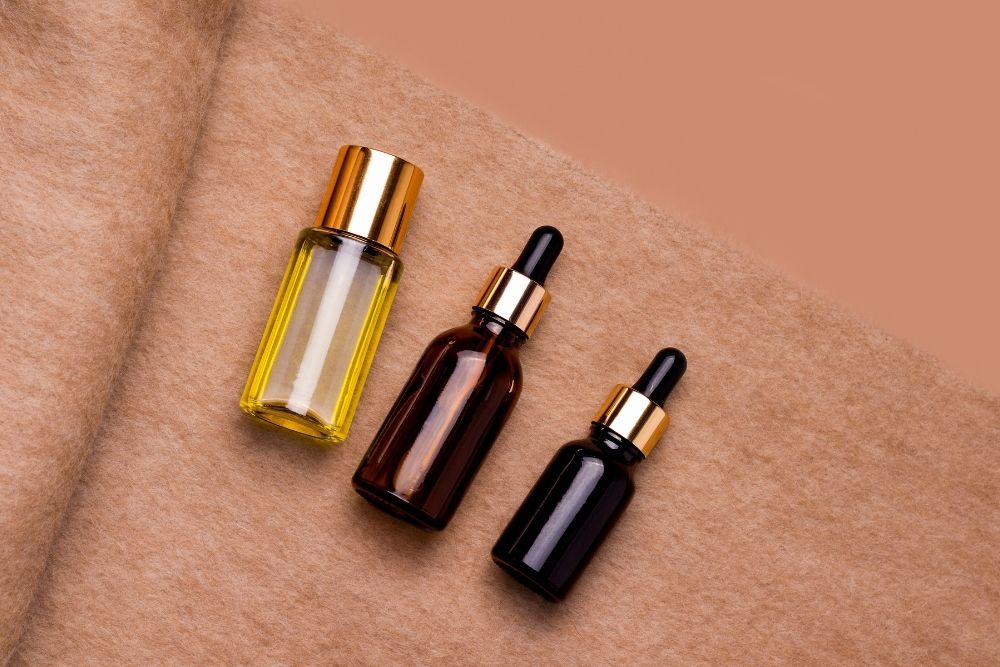
2 part Sandalwood Essential Oil
1 part Cinnamon Essential Oil
1 part Orange Essential Oil
Sleepy Time
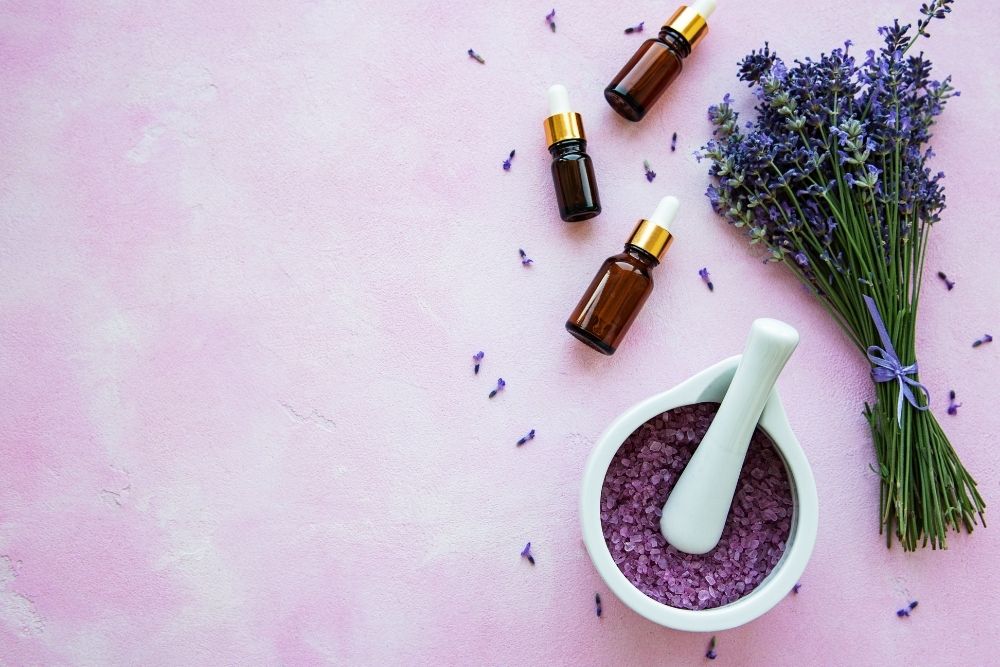
1 part Lavender Essential Oil
1 part Marjoram Essential Oil
You can build off these recipes as much as you like. Switch things out, add new oils, or copy them exactly if you want to.
Keeping Pets and Kiddos in Mind
We really care about safety here, and it’s always important to talk about using essential oils properly around young children and pets, especially if it’s in the form of a spray.
Pets are very sensitive to scents and the wrong essential oil may trigger an allergic reaction. Cats are particularly delicate because they lack the enzyme that helps their body break down the scent molecules.
When it comes to young children, their cute little button noses may not be able to handle an essential oil like an adult nose. All oils need to be well-diluted around children and some oils shouldn’t be used at all around them.
Don’t worry though. A bit of research and even a short chat with a pediatrician or veterinarian will steer you in the right direction.
Get Spritzing!
Do you think you’re a reed diffuser person, or do you like the sound of a scented room spray more? We’d love to hear which one suits your needs best, and what essential oils you like to fill the aromatherapy vessels with.
Let us know how your room spray liquid to reed diffuser transfer goes, and don’t forget to add alcohol to the mix!
Happy Oiling!

I currently work as a medical receptionist, but my ultimate goal is to work as an occupational therapy assistant. Helping others achieve a better quality of life is something I’m after. That’s one of the main reasons I started this blog. Learn more about me.
